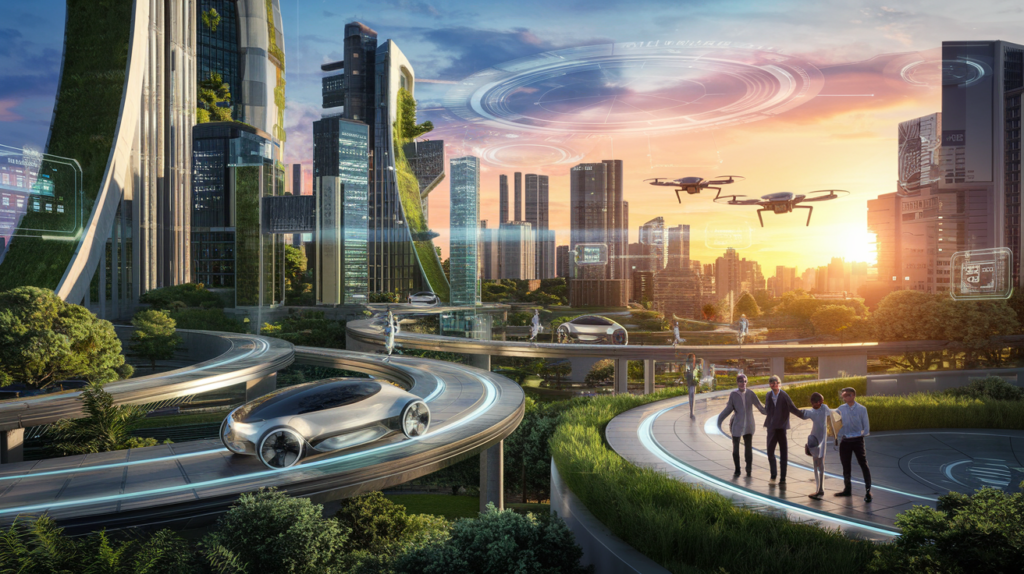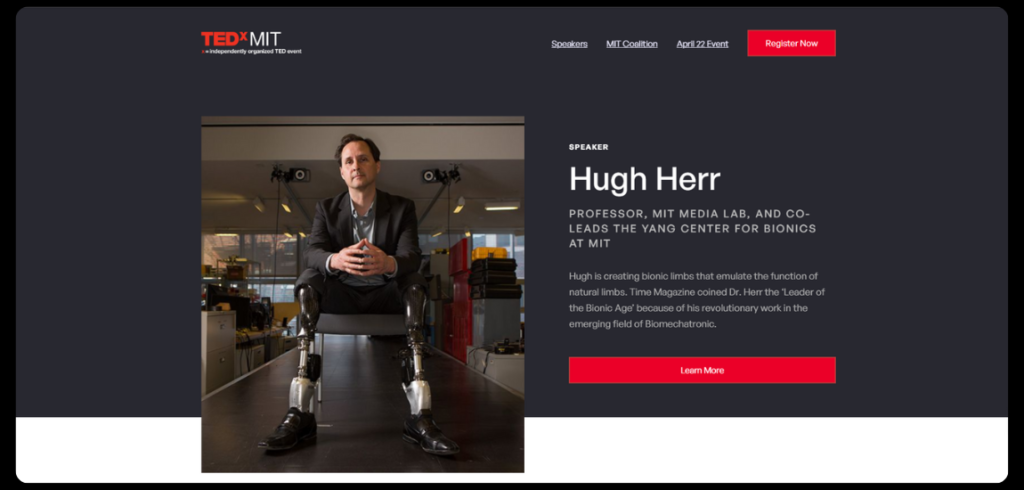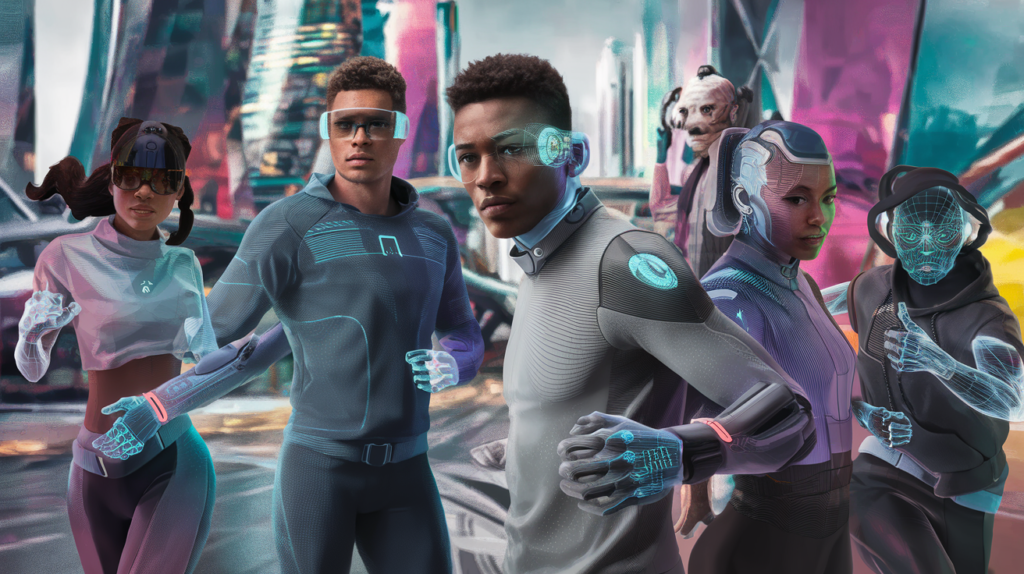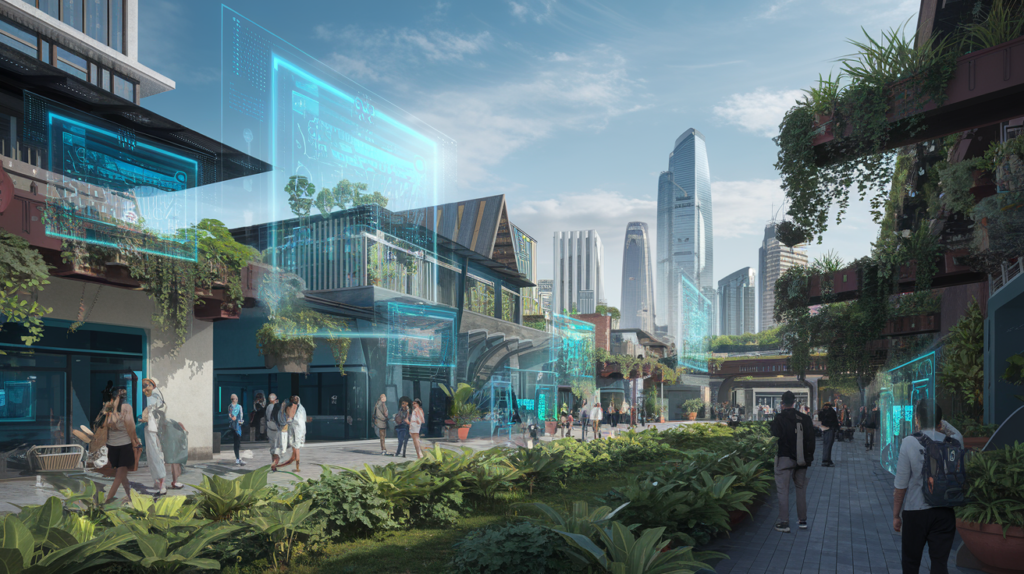In today’s world, the lines between humans and machines are getting very thin. We’re at a crossroads where technology is changing how we live. The big question is: Are we on the verge of a new era where we blend with our creations? This journey explores how technology is reshaping the future of Humanity.
From the start of combining humans and machines to the growth of bionic parts, the future is full of surprises. We’ll look at how neural networks and brain boosts are changing us. We’ll also dive into transhumanism, where tech and biology mix, changing our evolution.

Key Takeaways
- Explore the revolutionary impact of technology on the future of humanity.
- Discover the cutting-edge advancements in human-machine integration and bionic enhancement.
- Understand the transformative potential of artificial intelligence and cognitive augmentation.
- Delve into the ethical considerations and social implications of human augmentation.
- Glimpse the possibilities of a future where humanity and technology converge.
Understanding the Dawn of Human-Machine Integration
Technology keeps getting better, making humans and machines work together more easily. This area, known as cyborg technology or human augmentation, has seen big steps forward. It’s all about creating bionic humans.
Early Milestones in Human Augmentation
The idea of mixing humans and machines started in the early 1960s. People like Manfred Clynes and Nathan Kline came up with “cyborg” in the 1960s. They dreamed of humans using tech to go beyond their natural limits.
The first modern prosthetic limbs came out in the 1950s. These early versions were simple but marked the start of a new era in bionic enhancement.
The Evolution of Cybernetic Technologies
Cybernetic tech has grown a lot over the years. It’s now more advanced and fits better with our bodies. We’ve seen big leaps in things like neural implants and advanced prosthetics.
Now, we can talk to machines with our minds thanks to brain-computer interfaces and neural networks. This lets us improve our minds and fix lost abilities.
Current State of Human Enhancement
Today, we have many ways to make humans better. There are gadgets that help us stay healthy and prosthetics that look and work like real limbs. The future of cyborg technology and human augmentation is wide open.
As we explore new tech, we face both great chances and tough questions. These will guide how we evolve with technology.
The Rise of Bionic Enhancement Technologies

The field of bionic enhancement technologies is rapidly growing. It’s changing the lives of people with disabilities. At the heart of this change is Hugh Herr, a leading biomechatronics expert. He works at the MIT Media Lab’s Center for Extreme Bionics.
Herr’s bionic limbs are changing what we think is possible. His prosthetics use the latest sensors and control systems. This lets users move and act like they did before.
This bio-mechatronics technology does more than just restore function. It also lets people do more than they thought they could.
“We are now in the midst of the bionic revolution, where human biology and technology are converging to enhance and extend our physical and cognitive capabilities.”
– Hugh Herr
These bionic enhancement technologies are not just for prosthetics. Scientists are also working on wearable exoskeletons. These devices give extra strength and endurance to those who need it.
The future of advanced prosthetics looks very promising. Hugh Herr and others are leading the way. They’re making a world where disability doesn’t hold anyone back.
Artificial Intelligence and Human Cognitive Enhancement
The field where artificial intelligence (AI) meets human brain enhancement is growing fast. It’s opening up new possibilities for what humans can do. At the core of this are neural networks and brain-computer interfaces, set to change how we boost our brains.
Neural Networks and Brain-Computer Interfaces
Advanced neural networks help AI systems understand complex data well. When linked with brain-computer interfaces, they let humans and machines talk directly. Neuralink, led by Elon Musk, is leading this effort. It aims to merge AI with our minds.
Cognitive Augmentation Through AI Systems
AI can also boost our brain power. It uses smart algorithms to help with memory, solving problems, and making decisions. This makes our brains stronger, helping us face tough tasks more easily.
The Promise of Enhanced Mental Capabilities
The mix of artificial intelligence and humans could lead to huge mental gains. With brain-cloud interfaces and Neuralink, we might soon have better memory, focus, and thinking skills. This could change what we think is possible for our minds.
| Technology | Potential Cognitive Enhancement |
|---|---|
| Neural Networks | Improved pattern recognition, data analysis, and decision-making |
| Brain-Computer Interfaces | Direct communication between the brain and digital systems, enabling seamless information exchange |
| Neuralink | Enhanced memory, attention, and overall cognitive performance through brain-machine integration |
As we delve deeper into artificial intelligence and humans, the chance for better minds gets closer. It shows a future where tech and biology blend, opening up new paths for growth and achievement.
“The merger of biological and digital intelligence is the next great frontier in technology.” – Elon Musk
Transhumanism: Bridging Biology and Technology
In the world of technology, transhumanism is changing how we see humans and machines. It’s about using technology to go beyond what our bodies can do. Transhumanists dream of a future where technology and humans work together seamlessly.
Ray Kurzweil, a famous futurist and inventor, leads this movement. He predicts a future where human-machine hybrids will be common. These hybrids will have abilities we can’t even imagine today.
- Kurzweil talks about the “Singularity,” a time when technology changes everything. This idea drives progress in AI, biotech, and nanotech.
- Transhumanists think merging with these technologies will help us overcome our biological limits. They believe it will lead to a better version of ourselves.
The mix of biology and technology is leading to big changes. We’re seeing new things like brain-computer interfaces, genetic engineering, and neural implants. These could make us smarter, help us recover from injuries, and even live longer.
“The Singularity is near, when human and machine intelligence will merge. We will be able to transcend our biological limitations and amplify our creativity.” – Ray Kurzweil
The idea of transhumanism is changing how we see ourselves and technology. It’s making us question what it means to be human. This new era of human-machine integration will shape our future.
Advanced Prosthetics and the Future of Human Mobility
Technology is changing prosthetics in big ways, making human mobility better than ever. We’re seeing new bionic limbs and prosthetics that feel more like real parts of our bodies. These changes are going to make a huge difference for people with physical disabilities.
Revolutionary Developments in Bionic Limbs
Bionic limbs have made huge leaps forward. Today’s prosthetics work better with our bodies, offering more function and feeling natural. They’re stronger, more responsive, and even let users feel touch and balance again.
Sensory Enhancement Through Prosthetic Innovation
One exciting area is adding sense to prosthetics. Scientists are using new tech to make prosthetics feel like real limbs. This lets users interact with the world in a more natural way, improving their lives and mobility.
Integration Challenges and Solutions
While new prosthetics are amazing, making them work with our bodies is tough. Engineers and doctors are working hard to make them comfortable and long-lasting. New materials and smart systems are helping make these technologies easier to use.
As prosthetics keep getting better, our mobility will change a lot. These advances not only help us move better but also let us live more fully with technology and our bodies working together.
Wearable Technology and Daily Human Enhancement
Wearable technology is changing our lives fast. Smartwatches track our health, and exoskeletons help with hard tasks. These gadgets make tech a part of our daily lives.
Moon Ribas is an artist who turned her feet into seismic sensors. This lets her feel the Earth’s movements, like earthquakes. It’s a cool way to see how tech can change our senses.
The DIY cyborg movement is also interesting. People are adding tech to their bodies on their own. They’re exploring what it means to be human with tech and biology together.
- Wearable devices like smartwatches and fitness trackers that monitor health and fitness data
- Exoskeletons and robotic limbs that enhance physical capabilities
- Sensory augmentation technologies, such as Moon Ribas’s seismic sensors
- The rise of the DIY cyborg movement and personal enhancement experiments
Wearable tech is making us more like machines. This could change how we live every day. It’s making us think differently about being human today.

“The future is already here – it’s just not very evenly distributed.” – William Gibson
Source: [1]
The Future of Humanity: Merging with Machines
Technology is advancing fast, and it’s changing how we live. Soon, humans and machines will be more connected than ever. This could lead to a new era where we use technology to improve ourselves.
Predictions for Human Evolution
Fields like cybernetics and brain-computer interfaces are making big strides. They might let us upgrade our bodies and minds with tech. This could give us new senses, more strength, or even let us talk to computers directly.
Technological Singularity Scenarios
The idea of a technological singularity is both exciting and scary. It’s when AI becomes smarter than us. Some think it could lead to huge leaps in tech, changing our world forever.
Social Impact of Human Augmentation
Using tech to improve ourselves could change society a lot. It might make some people feel left out or question who they are. We’ll have to think about privacy, security, and fairness as we blend with machines.
The mix of humans and tech is both promising and challenging. As we explore new possibilities, we must think about the good and bad. We want to make sure this change helps everyone, not just a few.
| Predicted Advancements | Potential Social Impacts |
|---|---|
| Enhanced physical capabilitiesIncreased cognitive abilitiesDirect brain-computer interfacesSeamless integration of technology | Accessibility and equity concerns questions of identity and what it means to be human privacy and security risk potential for social stratification |
Ethical Considerations in Human Enhancement
Technology is changing how we live, bringing up big ethical questions. The idea of transhumanism, which aims to improve us with tech, has started a big debate. It makes us think deeply about what it means to be human.
People worry about how these technologies might affect our freedom, fairness, and what it means to be human. Supporters say these advancements could make us healthier, live longer, and think better. They believe it could lead to a better world for everyone.
But, there are also concerns. Some fear a world where only the rich can get these upgrades. Others worry about misuse, like forcing people to change or treating them unfairly. This could hurt our dignity and make us lose our humanity.
| Ethical Considerations | Potential Risks |
|---|---|
| Autonomy and Consent | Coercion and Manipulation |
| Inequality and Social Justice | Discrimination and Marginalization |
| Human Dignity and Integrity | Dehumanization and Loss of Humanity |
As we move forward with ethical issues in technology and transhumanism and ethical considerations, we must talk openly. Policymakers, ethicists, and the public need to work together. We must make sure these technologies are used wisely and fairly for everyone.
“The greatest challenge facing humanity is the ethical use of technology.”
Brain-Cloud Interfaces: The Next Frontier
Technology is pushing how we connect with machines. Brain-cloud interfaces show us a future where our brains and the cloud work together. This could change how we think and make decisions.
Neuralink and Similar Technologies
Neuralink, led by Elon Musk, is leading this charge. They aim to create a brain chip for our brains. This chip would let us talk directly to digital platforms.
Neuralink is not alone in this race. Other companies and scientists are also working on brain-cloud interfaces. They’re making progress in neural networks and artificial intelligence. This is shaping the web4 era, where tech and biology blend.
Data Privacy and Security Concerns
However, brain-cloud interfaces also raise big privacy and security issues. They connect our minds to the digital world. This makes our personal data vulnerable to hackers.
Keeping our data safe will be a big challenge. It’s essential as these technologies grow.
Potential Applications and Benefits
Despite the risks, brain-cloud interfaces offer many benefits. They could improve our thinking and decision-making. They might even help people with brain injuries or diseases.
We’re on the edge of a new era. Brain-cloud interfaces promise to change our lives. But we must be careful and ensure they help us, not harm us.
Pioneering Figures in Human Augmentation
Several visionary individuals have led the way in human augmentation. Neil Harbisson, a pioneering artist and cyborg activist, is known for his eyeborg technology. Born with achromatopsia, he couldn’t see colors. But with his eyeborg, he can now see the full spectrum of colors.
Hugh Herr, a bioengineer at MIT, is another remarkable figure. He lost his legs in a climbing accident. Herr has worked on advanced prosthetic limbs, changing lives and giving mobility back to many.
| Pioneering Figure | Contribution | Impact |
|---|---|---|
| Neil Harbisson | Eyeborg technology | Extending human senses to perceive color |
| Hugh Herr | Bionic limbs | Restoring mobility and empowering individuals with physical disabilities |
| Moon Ribas | Seismic sensors | Expanding human perception of the Earth’s movements |
Moon Ribas, an avant-garde artist and cyborg activist, has also made significant contributions. She has integrated seismic sensors into her body. This lets her feel the Earth’s movements and vibrations in real time. Her work has opened up new ways to experience and express art.
These pioneers have changed how we see the future of technology and the human body. Their work challenges our understanding of humanity. It also inspires new thinkers and innovators to explore human potential.
The Role of Biotechnology in Human Evolution
Biotechnology is changing the world fast. It’s making huge leaps in genetic engineering and synthetic biology. These changes could greatly affect how humans evolve in the future.
Genetic Engineering Advances
Genetic engineering has made huge strides. Scientists can now change genes with great precision. This means we might see new ways to treat diseases and even design babies with certain traits.
Synthetic Biology Integration
Synthetic biology is a new field that designs new biological systems. It could change many parts of our lives. Imagine personalized medicines and green technologies that help our planet.
Future Applications and Possibilities
- Genetic engineering and synthetic biology could lead to better treatments for genetic diseases. We might see more targeted therapies.
- These technologies could also improve our bodies and minds. This could open up new possibilities for humanity.
- But, we need to think about the ethics of these advancements. They raise big questions about what it means to be human.
Biotechnology is key to our future. As we explore new scientific frontiers, we must be mindful of ethics. This will help us move forward in a way that’s fair and respectful.
Preparing for an Augmented Future
The world is moving fast towards an interconnected augmented reality era. It’s important for society to get ready for the rise of armored core-augmented humans. This mix of technology and biology will change how we live, bringing both new chances and big challenges.
At the heart of this change is Web5, a new internet that connects humans and machines smoothly. As we move towards a more augmented future, everyone needs to adjust and welcome these changes.
- Getting Ready for Augmented Reality: Advanced wearables and digital worlds are making the real and virtual worlds mix. To get ready for this interconnected augmented reality era, we need new skills, innovative tools, and teamwork across different fields.
- Setting Rules for Augmented Humans: As armored core augmented humans become common, we need rules for data privacy, safety, and ethics. Policymakers and tech leaders must work together to keep up with tech progress and protect society.
- Investing in Education and Training: To get the workforce ready for an augmented future, we need to invest in STEM, digital skills, and lifelong learning. It’s key to give people the skills to succeed in a world driven by technology.
| Key Considerations for an Augmented Future | Potential Impacts |
|---|---|
| Regulatory Frameworks for Augmented Humans | Ensuring ethical guidelines, data privacy, and safety standards |
| Workforce Adaptation and Skill Development | Transitioning to new job roles and embracing technological change |
| Social and Cultural Implications | Addressing equity, accessibility, and the societal impact of human augmentation |
By tackling these important issues, we can get ready for the augmented future. We can use new tech to improve our lives while avoiding risks and making sure everyone has a fair chance.

“The future is not something that simply happens to us; it is something we create through our choices and actions today.”
The Role of AI in Enhancing Human Abilities
In today’s fast-changing tech world, AI and human creativity are working together in new ways. Generative AI, a recent breakthrough, is changing how we think about creativity. It helps make human creativity even better.
Creativity, once seen as only human, is now getting a boost from AI. These smart-systems can look through lots of data, find patterns, and come up with new ideas. They work alongside our brains to make creativity even stronger.
Generative AI uses machine learning and natural language to help with ideas, writing, and solving problems. It takes over the easy parts of creative work. This lets people focus on the big ideas and decisions.
AI and human skills together are changing many fields, like art, design, science, and product making. As we keep working together, we’ll see even more amazing things from human creativity and problem-solving.
| AI Capabilities | Human Strengths |
|---|---|
| Conceptual thinking emotional intelligent contextual understanding creativity | Conceptual thinking emotional intelligent contextual understandingCreativity |
Using generative AI, we can make a future where human creativity grows. This will lead to new, exciting ideas and solutions for our world’s big challenges. As we keep exploring how humans and machines work together, AI’s role in boosting human abilities will grow even more.
“The future of creativity lies in the seamless integration of artificial intelligence and human ingenuity.”
The Rise of Augmented Humans in Daily Life
The world is moving towards a future where humans and machines blend together. We see this in wearable tech and advanced prosthetics. These changes are reshaping how we live, work, and connect with others.
In the workplace, augmented humans are making a big impact. They help employees work better and smarter. People in healthcare, engineering, and the arts are using tech to improve their skills. This is changing what we thought was possible.
But it’s not just work that’s changing. In our free time, augmented humans are making a difference too. Smart wearables, bionic limbs, and brain-computer interfaces are changing how we enjoy ourselves and stay healthy.
The rise of augmented humans is shaping our future. It brings both new chances and big questions. We must think about the ethics and how society will change as humans and tech merge.
“The future is already here – it’s just not very evenly distributed.” – William Gibson, science fiction author
Source: [1]
Conclusion
The future of humanity is deeply connected to new technologies. Bionic enhancements, artificial intelligence, and brain interfaces are changing us. They are making the line between biology and tech very thin, starting a new chapter in human evolution.
Advanced prosthetics, wearable tech, and brain upgrades are boosting our abilities. They are changing what it means to be human. As we explore this new world, we must think about the ethics of these changes. We need to talk and make laws that protect everyone’s future.
We are on the edge of a technological revolution. This could bring big changes, like longer lives and new abilities. But we must think about the big questions these changes raise. How will we use these technologies to make our world better, not worse?
FAQ
What is human-machine integration and how is it shaping the future of humanity?
Human-machine integration is when technology and the human body merge. It’s changing many parts of our lives, like how we move and think. This change is making us rethink what it means to be human.
What are the key milestones in the history of human augmentation?
The journey of human augmentation started with early cybernetic technologies. These included prosthetic limbs and devices to enhance senses. Now, we have advanced prosthetics and bio-mechatronics that are changing lives and pushing human limits.
How are bionic enhancement technologies revolutionizing human mobility?
Bionic technologies, like advanced prosthetics, are changing how we move. Hugh Herr’s work on bionic limbs is a great example. These advancements are giving new hope to those with disabilities and changing our views on mobility.
How is artificial intelligence (AI) impacting human cognitive enhancement?
AI is helping us think better through neural networks and brain-computer interfaces. Companies like Neuralink are working on linking AI with our brains. This could change how we think and learn.
What is the role of transhumanism in bridging biology and technology?
Transhumanism is a movement that wants to merge biology and technology. It aims to improve and go beyond human limits. Thinkers like Ray Kurzweil are leading this idea, shaping our future with technology.
How are wearable technologies impacting daily human enhancement?
Wearable tech is making it easier to add new abilities to our daily lives. For example, Moon Ribas’s seismic sensors and DIY cyborg projects are changing how we see technology and our bodies.
What are the ethical considerations surrounding human enhancement technologies?
Using technology with our bodies raises big ethical questions. Debates on transhumanism and human enhancement touch on benefits and risks. It’s important to think about these as we move forward with technology.
What are the privacy and security concerns associated with brain-cloud interfaces?
Brain-cloud interfaces, like Neuralink, raise concerns about data privacy and security. There’s worry about keeping neural data safe and preventing misuse. These are big challenges as we connect our brains to digital systems.
How are pioneering figures in human augmentation shaping the field?
People like Neil Harbisson, Hugh Herr, and Moon Ribas are leading in human augmentation. Their work, from Harbisson’s eyeborg to Herr’s limbs and Ribas’s sensors, is inspiring new advancements in merging technology with our bodies.
What role does biotechnology play in shaping the future of human evolution?
Biotechnology, especially in genetic engineering and synthetic biology, is key to our future. It could enhance our abilities and change how we develop. This could be a big step in human evolution.
How can society prepare for an augmented future?
Preparing for an augmented future means thinking about new technologies and their impact. We need to consider the ethics of these advancements. This includes understanding technologies like Web5 and how they will change us.
How can AI enhance human creativity and abilities?
AI can help us create more and work better with technology. It can make us more creative and capable. AI is changing how we think and work, opening up new possibilities.
How are augmented humans becoming more prevalent in daily life?
Augmented humans are becoming more common as technology improves. We’re seeing more wearable devices and implants. This is changing how we live, work, and interact with each other.

